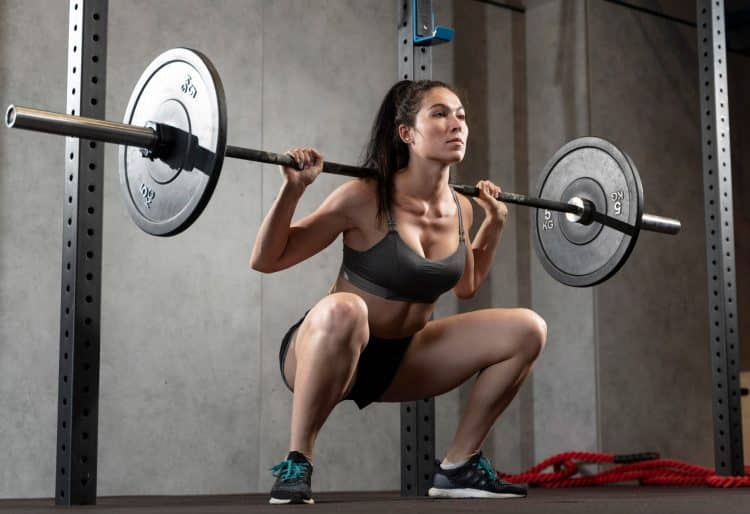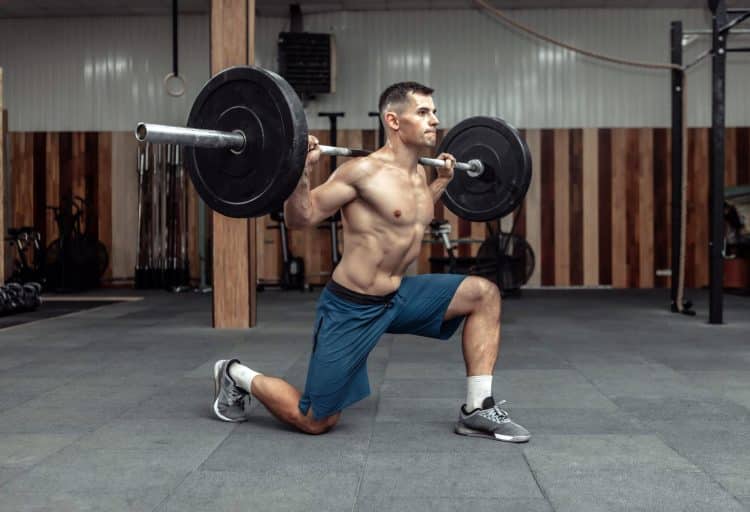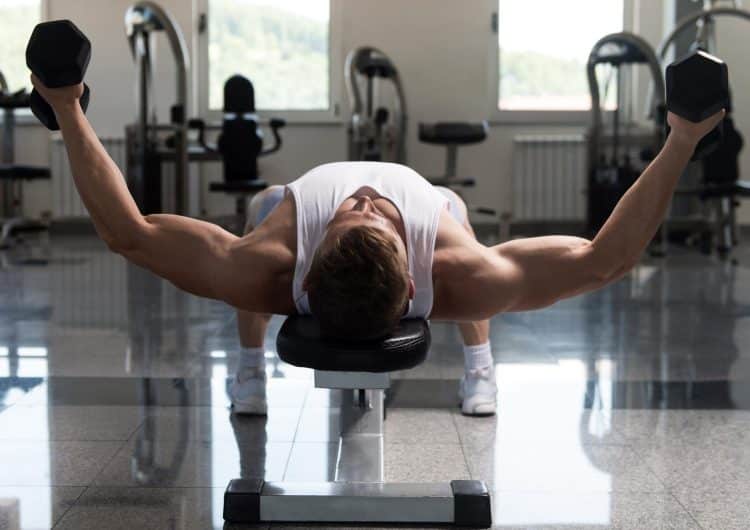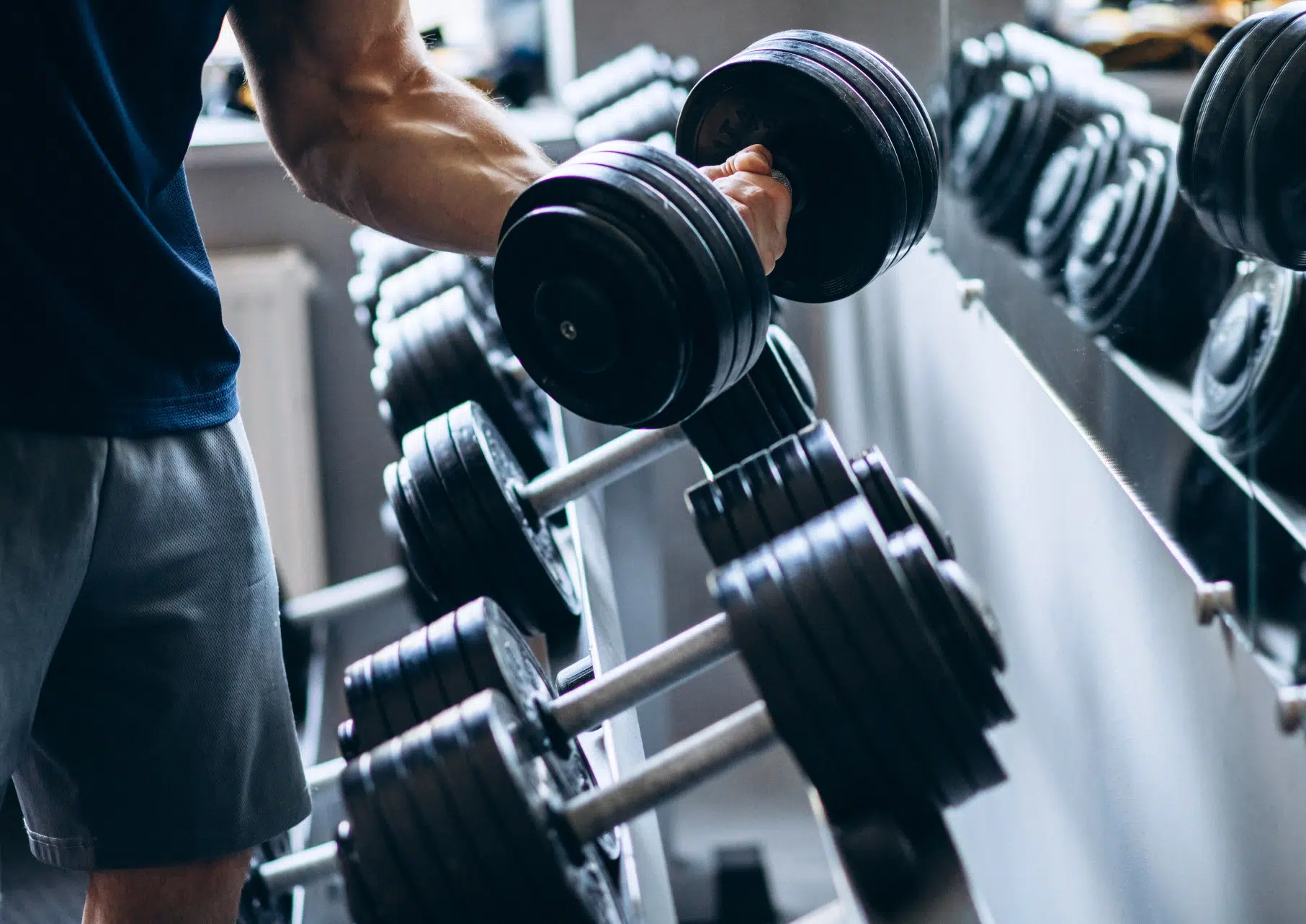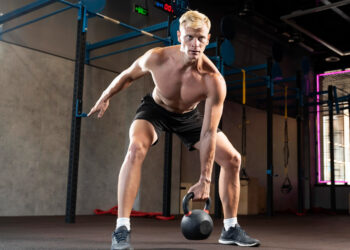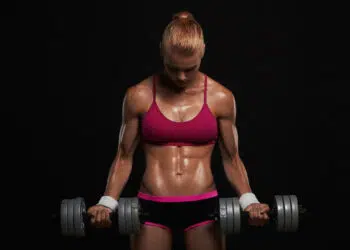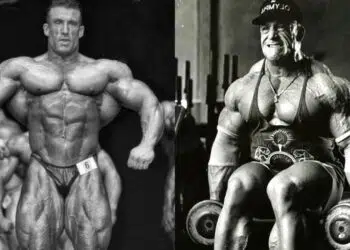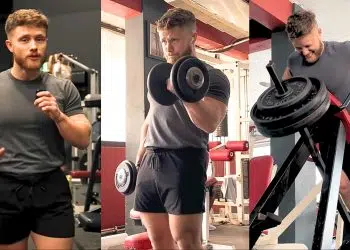Strength training is good for everybody’s body. Regardless of your fitness goals, lifting weights will help you achieve them faster. Strength training is also good for every aspect of your health, and research suggests that stronger people enjoy longer lives than their weaker contemporaries (1).
But which type of strength training should you do? After all, there are a lot of different methods to choose from. A few of your options include:
- Bodybuilding
- Powerlifting
- Powerbuilding
- Olympic lifting
- Resistance band training
- Suspension training
- Calisthenics
As a 30-year veteran personal trainer, I’ve used every type of strength training imaginable, both in my own workouts and those of my clients. However, the biggest choice I usually face when designing a workout program is between machines and freeweights.
While machines have their place, especially for bodybuilders and beginners, in my experience, freeweights provide the greatest bang for your workout buck, often delivering superior results in less time.
In this article, I reveal the many benefits of freeweight vs. machine-based strength training.
The Benefits of Freeweight Training
Not sure if you should make the switch from machines to freeweights? Consider these benefits and then decide!
Level Up Your Fitness: Join our 💪 strong community in Fitness Volt Newsletter. Get daily inspiration, expert-backed workouts, nutrition tips, the latest in strength sports, and the support you need to reach your goals. Subscribe for free!
Increased Muscle Activation
Machines provide a convenient way to isolate individual muscles. While this can be useful for developing specific body parts or fixing localized weaknesses, it’s not the most efficient way to train. In addition, machines tend to support your body and guide your movements, further limiting the number of muscles used during each exercise.
In contrast, most freeweight exercises involve multiple muscles, as you must support and stabilize your body yourself. This results in greater muscle activation.
Greater muscle activation means you won’t need to perform as many exercises per workout, potentially saving you a lot of time. For example, to train all your leg muscles with machines, you will need to perform a combination of the following:
- Leg extension
- Leg curl
- Leg press
- Hip abduction
- Hip adduction
- Lower back extensions
- Planks
Or, you could just do freeweight squats and Romanian deadlifts and achieve a similar training effect.
Increased Core Strength
Core is the collective term for the muscles surrounding your midsection, including the rectus abdominis, obliques, transverse abdominis, and erector spinae. These muscles work together to stabilize your lumbar spine, taking pressure off the intervertebral disks. A strong core is often linked to a lower incidence of lower back pain and injury.
Freeweight exercises develop more core strength than the same movement done on a resistance training machine. That’s because you must use these muscles to stabilize your spine and prevent unwanted movements. This is called bracing and is a critical part of freeweight training.
While you should still include core training in your workouts, it’s good to know that freeweights provide your core with a welcome workout.
Improved Functional Strength
All types of resistance training build strength. However, the strength developed by machines doesn’t always transfer to activities outside the gym. That’s because most machine exercises are non-functional and do not train your body to work as it does in nature.
For example, think about leg extensions and leg curls. While these are effective isolation exercises for the quadriceps and hamstrings, it’s rare for these muscles to work alone. Instead, they usually work together and with several other muscles, e.g., when you are walking or bending down to pick up a heavy object.
In contrast, freeweight squats, deadlifts, lunges, etc., closely mimic many of the activities of daily living. Strength built with squats will similar movements much easier. So, if you want to develop strength that you can use outside of the gym, freeweights are your best choice.
Related: Beyond the Basics: Incorporating Functional Training into Your Workout Splits
Enhanced Balance and Coordination
Machines often feature backrests, pulleys, cables, and rods to support your body and guide your movements. While this assistance means machine exercises are usually easier to learn than their freeweight alternatives, it also robs you of a couple of valuable benefits.
As their name implies, freeweights are free to move in any direction. Consequently, you must control them, so they remain on the correct path for your chosen exercise. This develops your balance and coordination.
Balance and coordination are functions of the neurological or nervous system. Improving your balance and coordination will give you better control over your limbs. Whether you play sports or just want to move more smoothly and efficiently, better balance and coordination will help.
Balance and coordination are especially important as you age. Maintaining or improving them can help reduce your risk of falls (2).
Increased Stabilizer Muscle Engagement
Analyze any exercise, and you’ll find a host of muscles performing different functions or roles. These are:
Agonist – also known as the prime mover, this is the muscle doing most of the work and is usually why you are performing your chosen exercise. For example, the agonist in bench presses is the pectoralis major or pecs.
Synergist – the synergist is a helper muscle that aids the agonist and modifies the movement so you can perform the exercise correctly. Synergists are usually smaller than the agonist and are best thought of as secondary muscles. For example, the triceps and deltoids are synergists during the bench press.
Antagonist – antagonist muscles oppose the agonist. They’re usually on the opposite side of the joint to the prime mover and relax and lengthen as the agonist contracts. The antagonists to the pecs during bench presses include the lats, mid-traps, and rhomboids.
Stabilizer – stabilizers are muscles that prevent unwanted movement. Also known as fixators, they are very active during most freeweight exercises as they must work to control the barbell or dumbbell you are lifting. The primary stabilizers during the bench press are the rotator cuff and core muscles.
Most machine exercises do not involve much stabilizer engagement, as the weight follows a fixed path. Unfortunately, weak stabilizers can cause joint dysfunction and injury. Strong stabilizers help prevent unwanted movements and keep your joints correctly aligned.
Level Up Your Fitness: Join our 💪 strong community in Fitness Volt Newsletter. Get daily inspiration, expert-backed workouts, nutrition tips, the latest in strength sports, and the support you need to reach your goals. Subscribe for free!
Related: How to Train Your Stabilizer Muscles for Increased Performance
Greater Range of Motion
Most machines not only guide your movements but limit your range of motion. Repeatedly using a shortened range of motion can reduce your flexibility. Of course, you can always stretch tight muscles, but flexibility training is time-consuming, and a lot of lifters are reluctant to do it.
In contrast, freeweight exercises often involve a more extensive range of motion. For example, dumbbell flyes take your chest and shoulders through a wider range of movement than the pec deck or chest press machine. Similarly, squats usually involve a larger range of motion than leg presses.
In short, many freeweight exercises involve a stretching component that will enhance your flexibility. So, no time or inclination to stretch? Switching from machines to freeweights will help.
Realistic Movement Patterns
Many freeweight exercises mimic the movements of everyday living. For example, the standing barbell or dumbbell press is a lot like putting a heavy object on a high shelf. In contrast, deadlifts mimic bending over to a child or pet off the floor.
As a personal trainer, I often relate freeweight exercises to everyday tasks, as it makes it much easier to learn new movements.
In contrast, machine exercises often have no similarity to activities outside of the gym. After all, when was the last time you did a lying leg curl or pec deck flye-type movement anywhere other than at the gym?
Doing natural movements with freeweights will make the same movement more manageable and safer when you encounter it out in the real world.
Enhanced Athletic Performance
All of the benefits listed so far will contribute to better athletic performance. In addition, there are many freeweight exercises that you can use to develop power for better sports performance. Power is the ability to generate force quickly.
Because of this, athletes from all sports do freeweight training, although exercise selection depends on the activity they’re training for. If machines are used, they’re supplements to and not replacements for freeweight training.
Summary: While there is nothing inherently wrong with machine-based resistance training, freeweights offer several additional benefits.
These include increased muscle engagement, greater stabilizer recruitment, improved balance and coordination, enhanced flexibility, and greater transference to athletic and everyday activities.
So, the question is not why add freeweights to your workouts, but why not?
Additional Advantages of Freeweights
Still on the fence about freeweight training? I hear you! Some people are intimidated by lifting dumbbells or barbells or think they’re only suitable for experienced exercisers. Here are a few freeweight advantages that may help change your mind.
Lower Cost
Whether you are thinking of opening a commercial gym or want to set up a home training studio, you’ll get more value for your money from freeweights compared to machines. Machines are expensive, and for the same cost as just one or two stations, you can buy all the freeweights you’ll ever need.
In addition, freeweights don’t require much maintenance and don’t break easily. In contrast, machines have many moving parts and require a fair bit of looking after to keep them working.
Minimal Space Required
Freeweights allow you to perform a lot of exercises in a compact space. This makes them ideal for home workouts. In fact, all you need is a squat rack, bench, barbell, dumbbells, and weights, and you can work out in just a few square feet. In contrast, a single resistance training machine can take up more space while only allowing you to do one movement.
Huge Variety of Exercises
There are hundreds of freeweight exercises to choose from. Sure, you must master the basics like squats, deadlifts, bench presses, overhead presses, bent-over rows, etc., before trying anything too exotic, but your choice of exercises is almost limitless.
In contrast, most resistance machines work in the same way, and one leg or chest press is much like the next. This can make machine training repetitive and boring.
Highly Customizable
You can perform most freeweight exercises in various ways, customizing the movement to your needs and goals. For example, you can easily modify your hand position, grip, width, and stance.
Such customization is not usually possible with machines, as most are made to fit the average exerciser. Because of this, you may find some machines uncomfortable, awkward, or even unusable.
Very Scalable
Contrary to popular opinion, it’s not a case of machines for beginners and freeweights for more experienced exercisers. That’s because you can scale most freeweight exercises for any fitness and experience level. In fact, before the 1960s, when resistance machines gained worldwide popularity, beginners only had access to freeweights, and they managed just fine.
While some freeweight exercises aren’t ideal for beginners, there are many more that are ideal for even the newest lifter.
Closing Thoughts
Your time and energy are valuable commodities, and I hate to think of you wasting them on ineffective, inefficient workouts. And while I have nothing against resistance training machines, I believe freeweights offer many more benefits and will help you reach your fitness goals faster.
So, while you don’t have to quit using machines altogether, I strongly recommend incorporating more freeweights into your workouts.
Not sure how to perform a particular freeweight exercise? Check out our massive library of exercise guides, and you’ll find the guidance you need!
Read also:
- 13 Different Types of Strength Training – Which is Best?
- Ditch Cardio for Compound Lifts: The Secret to Fast Metabolism and Real Strength
References:
- O’Keefe JH, O’Keefe EL, Eckert R, Lavie CJ. Training Strategies to Optimize Cardiovascular Durability and Life Expectancy. Mo Med. 2023 Mar-Apr;120(2):155-162. PMID: 37091937; PMCID: PMC10121111.
- Šarabon N, Kozinc Ž. Effects of Resistance Exercise on Balance Ability: Systematic Review and Meta-Analysis of Randomized Controlled Trials. Life (Basel). 2020 Nov 15;10(11):284. doi: 10.3390/life10110284. PMID: 33203156; PMCID: PMC7697352.

